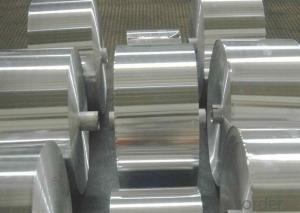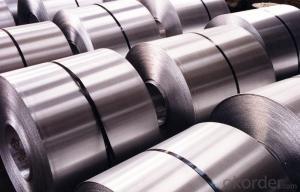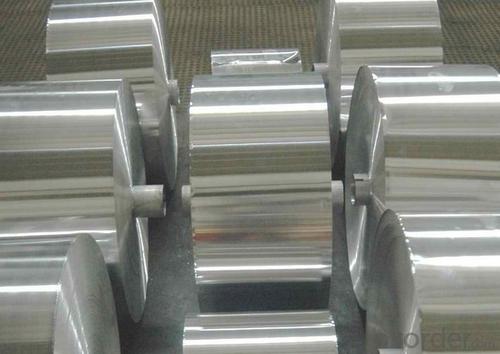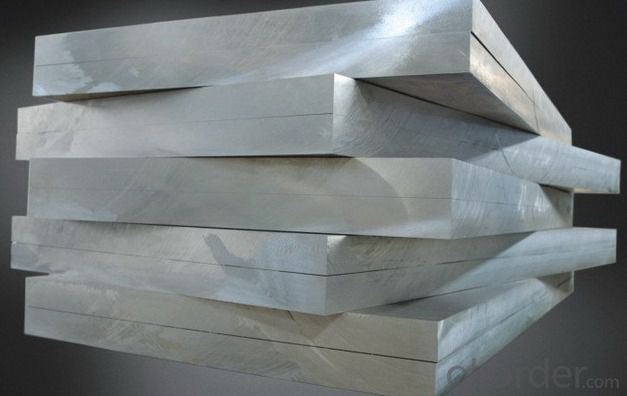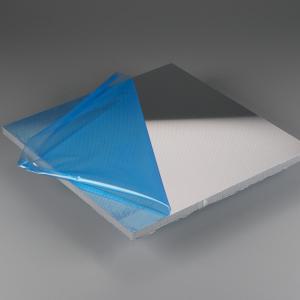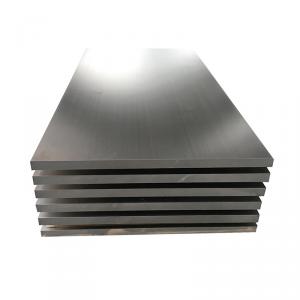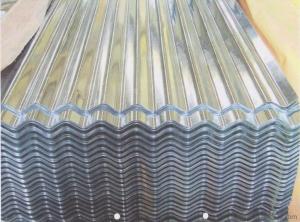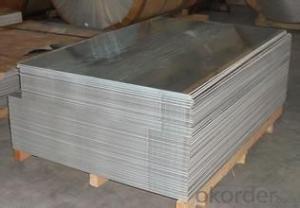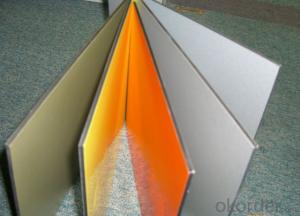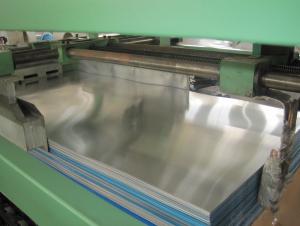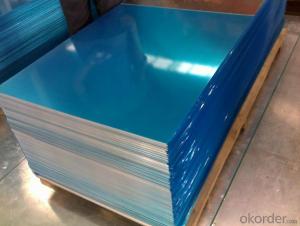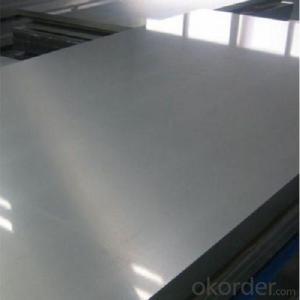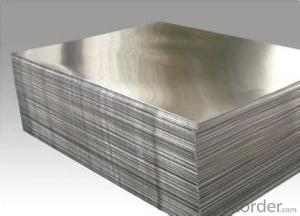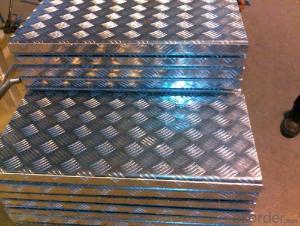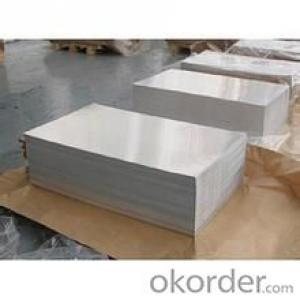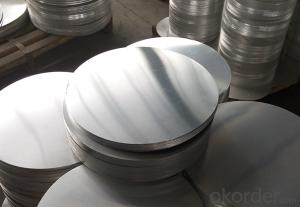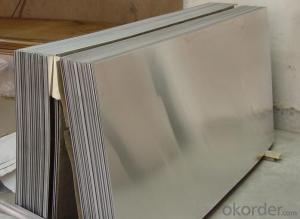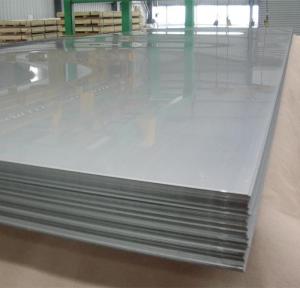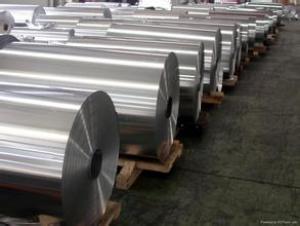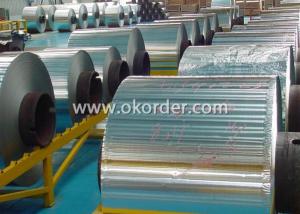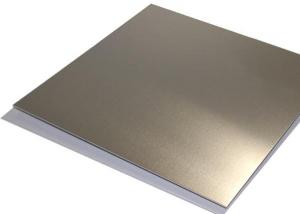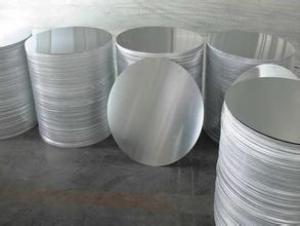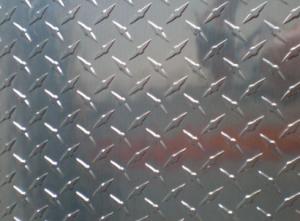Mill Finished Aluminum Decking Sheets for Sandwich Panel
- Loading Port:
- Shanghai
- Payment Terms:
- TT OR LC
- Min Order Qty:
- 1 m.t.
- Supply Capability:
- 2000 m.t./month
OKorder Service Pledge
OKorder Financial Service
You Might Also Like
Specification
Structure of Prepainted Aluminium Coil PPGL Description:
With the sophisticated hot rolling line, cold rolling line and foil processing line as well as inspection facilities, most of its equipments are advanced nationally and some of even worldwide. It’s designed out put is 200,000 tons per year, the main products include 1xxx, 3xxx, 5xxx, 6xxx, 7xxx, 8xxx series aluminum plate, coil, foil and PS plate base etc. high precision aluminum and aluminum alloy plate, sheet, foil material. The products have versatile applications such as for aerospace, shipping, printing, automobile, construction, domestic appliances, decorating, packaging and other fields.
Main Features of Aluminium Coil PPGL:
Mainly in Construction, decoration, PCB materials, cover material, LCD back panel, refrigeration, air conditioner, automobile, etc
Images of Aluminium Coil PPGL:
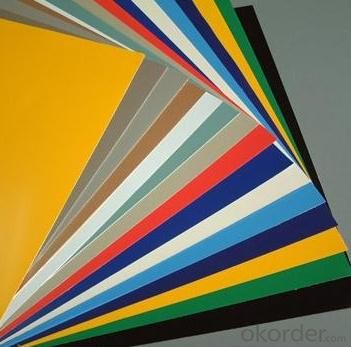
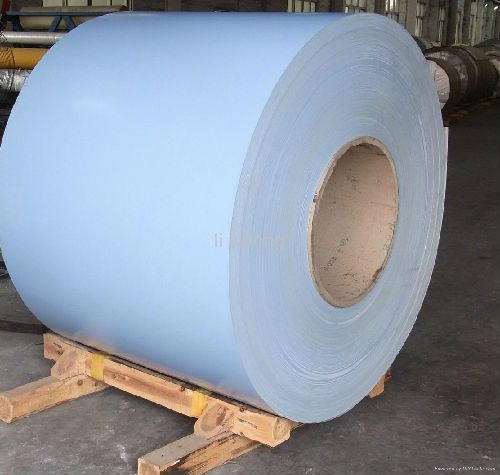

Aluminium Coil PPGL Specification:
Product Name | Aluminum Coil |
Alloy | A1100,A3003,A1050,A8011,A3105,A5005 etc |
Thickness | 0.022mm to 3.0 mm |
Width | Standard width:1240mm; 1200mm |
All width: 30mm - 1600mm | |
Diameter | out dia:1200mm |
Interior dia: 405mm,505mm | |
Weight | 2.5 T/coil,3.0 T/coil |
Coating | PE,PVDF,ACRYLIC |
Surface | Embossed, mill finish, coated; aluminum gutter coil |
Color | AS to all RAL color |
Gloss | 10-90%(EN ISO-2813:1994) |
Coating Thickness | PE: more than 18 micron |
PVDF: more than 25 micron | |
Coating Hardness (pencil resistance) | More than 2h |
Coating adhesion | 5J(EN ISO-2409:1994) |
Impact Resistance | No peeling or cracking(50 kg/cm,ASTMD-2794:1993) |
Flexibility (T-bend) | 2T |
MEK resistance | More than 100 |
FAQ of Aluminium Coil PPGL:
1.Superior quality of raw material.
2.Reasonable and stable chemical composition.
3.Accurate tolerance.
- Q: Does anyone know how to polish aluminum on a motorcycle that isn't too expensive to do?
- Get a $5 can of metal polish and a rag or get you one of those things that fits a drill with the really soft cloth wheel on it and polish till your hearts content. I have done the side covers, manifolds, even the carbs on old british bikes.
- Q: General characteristics of pure aluminium plate of pure aluminium plate
- Comparison of pure aluminium sheets:1, grade: 1A85, 1A90, 1A93, 1A97, 1A99;Product type: plates, belts, foils, tubes;Main characteristics: Industrial high-purity aluminum;Applications: mainly used in the production of various electrolytic capacitor foil, acid fast container, etc., products have plates, belts, foils and so on.2, grade: 1060, 1050A, 1035;Product type: foil, wire;Main features: industrial pure aluminum has the characteristics of high plasticity, corrosion resistance, electrical conductivity and good thermal conductivity, but the strength is low, it can not be strengthened by heat treatment, cutting is not good. Acceptable contact welding and gas welding;Scope of application: use the advantages of making some structures with specific properties, such as aluminum foil gasket and capacitor, electronic tube isolation network, wire and cable protective sleeve, net, wire core and aircraft parts and trim ventilation system.3, brand: 1100;Product type: Sheet & strip;Main features: for ordinary industrial pure aluminum aluminum content of 99%, can not be strengthened by heat treatment; low strength, but has good ductility, formability, weldability and corrosion resistance; anodic oxidation can improve corrosion resistance, and beautiful surface;Scope of application: mainly produces sheet metal and strip. Suitable for making all kinds of deep stamping products, and is widely used in various fields from cooking utensils to industrial equipment.
- Q: What is the cost of aluminum sheet compared to other metals?
- The cost of aluminum sheet compared to other metals can vary depending on various factors such as market conditions, availability, and specific metal grades. Generally, aluminum sheet is considered to be more affordable than many other metals such as stainless steel, copper, and brass. This is mainly due to the abundance of aluminum in the Earth's crust and the relatively low cost of extracting and refining it. Additionally, aluminum is often lighter in weight compared to other metals, making it a more cost-effective option for applications where weight is a concern, such as in the transportation industry. However, it is important to note that the cost of aluminum can fluctuate based on global supply and demand dynamics, tariffs, and other economic factors. Therefore, it is recommended to check current market prices and consult with suppliers or metal specialists for accurate and up-to-date pricing information.
- Q: Are 101 aluminum sheets suitable for interior design or architectural applications?
- Indeed, 101 aluminum sheets prove to be apt for both interior design and architectural purposes. This alloy, widely used, possesses admirable strength, corrosion resistance, and exceptional formability. It can be effortlessly manipulated, molded, and assembled to craft a multitude of architectural components, including wall panels, ceilings, furnishings, and ornamental embellishments. Moreover, 101 aluminum sheets can be treated with diverse coatings or textures to augment their aesthetic allure and longevity. In conclusion, these sheets of 101 aluminum offer versatility and affordability, making them a prudent selection for interior design and architectural ventures.
- Q: Is it possible to utilize aluminum sheets in a home renovation project?
- <p>Yes, you can use aluminum sheets for your home renovation project. Aluminum is a versatile material known for its strength, durability, and resistance to corrosion. It's commonly used for roofing, siding, and even for decorative purposes. Aluminum sheets are lightweight, easy to install, and can be painted or coated to match your home's aesthetic. They also offer good thermal performance and can be recycled, making them an environmentally friendly choice. However, it's important to consider the specific requirements of your project, such as the local climate, design preferences, and budget, to ensure aluminum is the best fit.</p>
- Q: you can turn in aluminum cans for cash some are called golden goats
- Aluminum okorder
- Q: Is it possible to use aluminum sheets for indoor purposes?
- <p>Yes, aluminum sheets can be used for indoor applications. They are commonly used in interior design for their durability, lightweight, and resistance to corrosion. Aluminum sheets are often utilized in the construction of furniture, decorative panels, and even as a material for interior walls and ceilings. Their ease of maintenance and ability to be recycled make them an environmentally friendly option for indoor use.</p>
- Q: I am doing some exam review and do not know how to do these...Calculate the number of Nitrate ions in 3.99 g or aluminum nitrate.
- ? number of NO3 = 3.99g AlNO3 x(1mol AlNO3/212.996 g AlNO3)x(1mol NO3/1mol AlNO3)x(6.02*10^23 number of NO3/1mol NO3)=11*10^21 number of NO3
- Q: Are aluminum sheets resistant to chemicals?
- Yes, aluminum sheets are generally resistant to many chemicals. Aluminum has a natural oxide layer on its surface that provides a protective barrier against corrosion and chemical reactions. This oxide layer is stable and resists most acids, alkalis, and organic solvents. However, aluminum can be corroded by certain chemicals, such as strong acids or bases, and some halogenated compounds. Additionally, prolonged exposure to certain chemicals or extreme conditions may weaken the oxide layer and make aluminum more susceptible to corrosion. Therefore, while aluminum sheets are generally resistant to chemicals, it is important to consider the specific chemical environment and potential interactions before using aluminum in certain applications.
- Q: I am trying to find a BRUSH ON type glue to adhere aluminium foil to a plastic model. scotch super 77 works great but dries way to fast and blows small pieces all over. white glue just dont work and superglue eats the plastic. I could use some help
- white glue will work if you dilute it 50% with water... they also sell an adhesive in craft stores for gluing down gold leaf... and of course Bare-Metal sells foil with an adhesive backing.... at one time they also sold a foil adhesive...
Send your message to us
Mill Finished Aluminum Decking Sheets for Sandwich Panel
- Loading Port:
- Shanghai
- Payment Terms:
- TT OR LC
- Min Order Qty:
- 1 m.t.
- Supply Capability:
- 2000 m.t./month
OKorder Service Pledge
OKorder Financial Service
Similar products
Hot products
Hot Searches
Related keywords
